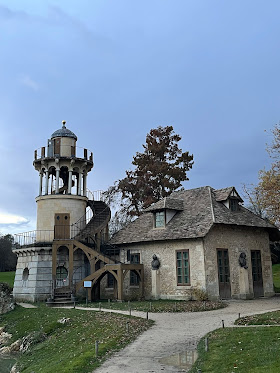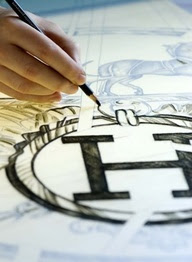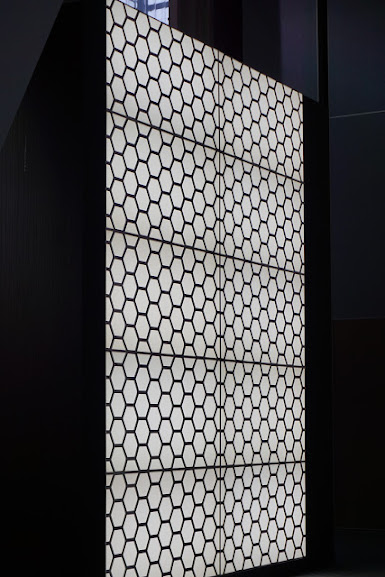Iconic & Varying French Style Encapsulated at The Palace of Versailles
From an Interior and Textile Designer's Lens,
Some Key Take-Aways From Touring
The Palace of Versailles
my Versailles tik tok
with freezing rain and snow, but the excitement for being there kept us giddy

Due to the reign of many kings during varying timeframes and the long period (about 50 years) where Versailles was in a limbo state (furniture and art sold, silverware melted down and sold following the French Revolution), The Palace of Versailles is a wonderful display of different design styles and aesthetics and a fine example of why the French are experts in high-style design. The Palace acts as a history of France and we see that history through the art, decorative arts and the architecture and gardens of this iconic place. Each king to follow put their unique stamp of design on the Palace which was often influenced by the traditions, fashion and cultural climate of those times.
In a nutshell, the History of Versailles- When a young future king (Louis XIII) traveled to the area for a hunting trip in 1607, he became enthralled in the area for its rich forest. In 1623 he built a small country lodge in Versailles. The Palace was renovated, changed, tweaked and changed hands from many kings following his death. You can see where Louis XIV's pomp style is showcased in much of the Palace displaying a time when France became an important export trader of fine made luxury goods bringing French style and bespoke wares throughout Europe. We got a thorough tour of King XIV's private apartment at Versailles which is worth doing.
However, I particularly love the design aesthetic of Louis XVI's reign where just before the French Revolution, he and Maria Antoinette brought Classicism to the palace. Their marriage (she was the former Archduchess of Austria Marie-Antoinette in 1770 at the Royal Opera House) was one of the greatest events to take place in Versailles in the 18th century. Sadly they were infamously murdered by guillotine. Following the French Revolution, the "LOUIS SEZ" style soon became a movement denouncing excessive (Louis XV style ).
photo via THOMAS GARNIER
"The style commonly called " Louis XVI style " was born from the encounter between a movement denouncing the excessive aspects of the Rococo style (or Louis XV style ) and a renewed interest in the Greco-Roman world. From the end of the 1750s, artists renewed their sources of inspiration and gave an increasingly large part to antique models, until almost exclusively on the eve of the Revolution of 1789." -Tour at Versailles
I loved the Petit Trianon which was Marie Antoinette's lair, a bit of a more country feel (yes still very grand) escape from the large palace. This smaller yet gorgeous cottage-like-palace is set on a farm called the Queen's Hamlet with adjoining pond and cupolas and a small hamlet nearby through the forest, ponds and foot bridges. The Petit Trianon is decorated in more of Classicism style of design with less ornate gold ormulu and adornments. Much of the furniture at the Petit Trianon has more straight lines with the colors softer and although rich textiles their hues are a bit muted and less bolder then seen in the rest of the Versailles.
The History of the Queen's Hamlet and the Petit Trianon- in the 1700's the palace was designed as an example of the ‘Greek style’ that was popular at the time in Europe. The Petit Trianon distinguished itself from the existing Grand Trianon. In 1774, Louis XV died of the smallpox which ushered in the reign of Louis XVI and his marriage to Marie-Antoinette. The new King gifted the Petit Trianon to his wife and the rest of the re-design is history. She extensively redid the palace and gardens and the original botanical garden was replaced with an Anglo-Oriental garden which was coming into fashion at the time. The queen used the hamlet as a place for relaxing walks, or to host small gatherings. Originally, The Queen insisted the hamlet was also a functioning farm to serve as an educational role for the
After the Revolution in 1804, France's Emperor Napoleon Bonaparte took over Versailles bringing it into management once again after a long time of it being out of public view. Today, one can see many of the works also at the Louvre showing some of the same design principles seen at Versailles. There is wide-spread use of marble, plasterwork, marquetry, parquetry and ormulu on the furniture with grand painted ceilings. That aesthetic has morphed over time with all the influences at play.
Later, during the troubling French Revolution, the Petit Trianon became a hostel. And later still, Napoleon restored the palace and gardens to their splendor. Petit Trianon was later converted into a museum dedicated to commemorate Marie-Antoinette.























